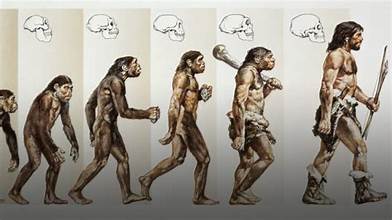We now resume our examination and review of The Lessons of History by Will and Ariel Durant. Published in 1968, it distilled the 11-volume historical series known as The Story of Civilization. The insight that came from researching and writing that landmark tome was provided succinctly and powerfully. I share the highlights with pleasure.
Chapter on Race and History
The first known publication of the theory of Aryan superiority was written around 1853 by Comte Joseph-Arthur de Gobineau in an essay on races of homo sapiens. It doesn’t explain how it is that great non-Aryan civilizations developed while trumpeting Aryan-related accomplishments.
There are various race theories proclaiming superiority of one race or sub-races (such as Teutons, Nordics and Franks) over another, but closer examination shows civilizations make the people. Racial and ethnic mixtures eventually create a new type of human. This blending has been happening since the beginning of civilization. America is still in its own mixture phase.
The antipathies between people of races that make up the fabric of humanity are cured by broadened education. Thus the “civilized soul will reveal itself in treating every man or woman, however lowly, as a representative of one of these creative and contributory groups.”
Chapter on Economics and History
The Durants acknowledged the interwoven relationship between economics and history. Karl Marx saw history as economics in action. Politics, organized religion, and the creations resulting in culture all have their roots basically in economics. The Industrial Revolution, motivated by the creation of wealth with innovation and efficiency, brought historical realities such as the decline of religion, loosening of morals, liberation of literature from dependence upon aristocratic patronage, even an economic interpretation of history. Certainly, history has been developed by money, such as in funding of the building of Greek, Egyptian and Roman architectural wonders, the Crusades, and the Renaissance.
The truth is, however, that noneconomic incentives shaped major events in history. For example, Buddha’s search for enlightenment, nationalistic movements, the Bolshevik Revolution. Oppression and the release from such provided plenty of incentive for the masses to change the course of history.
Concentration of wealth is an occurrence in human activity. The rich get richer, the poor get poorer and increase in number while they’re at it. Eventually, the poor masses or wise progressives try to rectify the inequities peaceably through government regulation or violently by revolution. The Durants concluded “in this view all economic history is the slow heartbeat of the social organism, a vast systole and diastole of concentrating wealth and compulsive recirculation.”
Government and History
Monarchy has dominated throughout much of history. It seems almost normal for the human family to have as its head a father or mother possessing the authority to govern the populace.
Oligarchies have been the most common form of government, where the minority rule over the majority. These include aristocracies that hold power by birth and theocracies through religious organizations or democracies controlled by the wealthy. Aristocracies, though supportive of the arts, has often fallen to the temptations of selfish privilege. This has led to oppression of the common people and their subsequent revolt.
Revolutions tend to replace one minority rule with another where the same instincts of the oppressor arise in the new, revolutionary government. The authors point out that “the only real revolution is in the enlightenment of the mind and the improvement of character, the only real emancipation is individual, and the only real revolutionists are philosophers and saints.”
Plato took a dim view of democracy, seeing it as one of four forms of government that repeatedly took turns rising and falling. They are monarchy, aristocracy, democracy and dictatorship. He wrote that democracy leads to dictatorship. Later evolution of democracy has led to more promising results, but the jury is probably still out. The
Durants judge democracy to be sounder than ever before, but they warn that factors such as war, divisions between races or classes, or wealth concentration could lead to dictatorship under anyone “who can persuasively promise security to all; and a martial government, under whatever charming phrases, will engulf the democratic world.”
More to Come
I see now I need a Part III to bring this article to a proper close. I hope you’ll come back to see how the authors wrapped up their Lessons of History.

